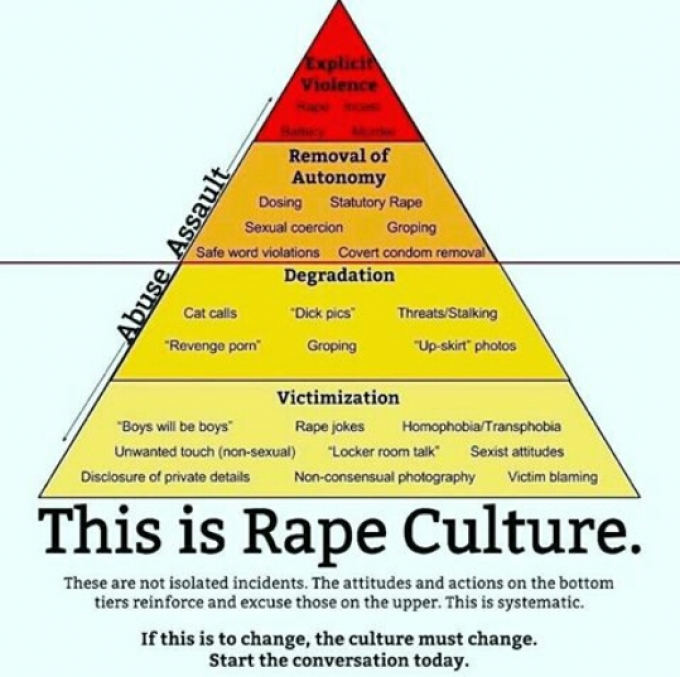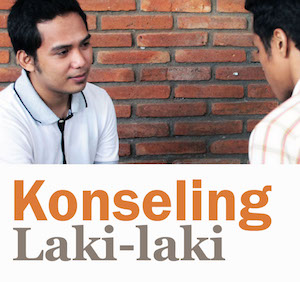“My family had to see pictures of my head strapped to a gurney full of pine needles, of my body in the dirt with my eyes closed, hair messed up, limbs bent, and dress hiked up. And even after that, my family had to listen to your attorney say the pictures were after the fact, we can dismiss them”
The victim’s statement before a court of law in the State of California, on a rape case that occurred in Stanford University perpetrated by Brock Turner, a 22-year-old student athlete (the person on the left, as displayed on the image beside this text).
Rape culture is a belief system that is installed within a society, which justifies male sexual aggressions and violence towards women and children.[2] This theory explains that what causes one person to rape another is not merely self-motivated, but it happens because the society supports it by tolerating such actions in the first place.[3] There are two signs that indicates the embodiment of rape: (a) when people justify sexual misconducts, by putting blame on the victims (e.g. by believing that rape happens because of the victim’s consent, or that sexual harassment occurs because the victims ‘asked for it’); and (b) When inappropriate actions associated with heterosexuality are regarded as a normal occurrence.[4]
There are many blatant examples of rape culture, a few of which can be in a form of popular music, e.g. a song by Robin Thicke and Pharell Williams titled “Blurred Lines”, which is considered a rape anthem, since its lyrics ridicules women’s consent in rape.[5] It can also be shown by a group of university students in Canada that chant “Y is for your sister, O is for oh-so-tight, U is for underage, N is for no consent, G is for grab that ass” during a student’s orientation in their campus.[6] Also, a student named Angie Epifano who got raped in her dorm, who did not get any support from her school counselors, because they did not believe that she had been raped.[7]
As evidenced, we live in a society that promotes sexual misconducts/harassment/assault, which lay fertile grounds for rape or other sexually-related-crimes to grow. As anthropologist Lionel Tiger opined: although human males, especially when in groups, are bound to be aggressive towards women, it does not necessarily lead to rape or any activity of violence.[8] The act of rape or sexual violence exist because the society and/or its male peers give social cues to do so.[9] Therefore, the intent to rape is shaped by the environment the perpetrator is in. We may not realize it, but a society that repeatedly is taught to think that way, is what makes preventing rape or other sexually-related crimes extremely hard to prevent, or to be given any justice.
As a matter of example, society would think that the only time someone would get raped is when he or she is walking a dark and secluded alley at night.[10] This automatically reinforces the believe that: (a) it is okay to rape people if they walk in a dark alley alone at night and (b) That rape will only occur at secluded places, and done by strangers, deliberately neglecting the fact that there are rape victims who are children of their perpetrators.[11] The problem is not about the inability of a person to see that this line of logic is false, but it is because nobody actually stop to think about whether this is morally right or not.
Sometimes society are so used to having other people think for them, that they forgot how to think for themselves. A ‘rape culture problem’ is emanated from the mindset that we possess, and how we express them in public discourse. It is a problem in which everyone within such society is responsible for. Be it laughing at jokes about rape, blaming your female peers for being ‘seductive’ when they have been sexually assaulted or harassed, or just by simply being silent and not talking about these issues. We’re all in it, and that is why it is also our collective moral responsibility to bowdlerize this ever-growing atrocity.
This article was written by Julian Martin, student at the Faculty of Law, Universitas Gadjah Mada.
[1] Buncombe, Andreq. “Stanford Rape Case: Read the Impact Statement of Brock Turner's Victim.” The Independent, Independent Digital News and Media, 2 Sept. 2016, www.independent.co.uk/news/people/stanford-rape-case-read-the-impact-statement-of-brock-turners-victim-a7222371.html.
[2] Cobos, April. “‘Rape Culture’ Language and the News Media: Contested versus Non-Contested Cases.” Journal for Communication Studies, vol. 7, 23 Dec. 2014, p. 38., rape culture.
[3] Ibid.
[4] Sills, Sophie, et al. “Rape Culture and Social Media: Young Critics and a Feminist Counterpublic.” Feminist Media Studies, vol. 16, no. 6, 2016, p. 936,, doi:10.1080/14680777.2015.1137962.
[5] Tanya Horeck (2014) #AskThicke: “Blurred Lines,” Rape Culture, and the Feminist Hashtag Takeover, Feminist Media Studies, 14:6, 1105-1107, DOI: 10.1080/14680777.2014.975450
[6] Williams, Mary Elizabeth. “College Students Cheer Sex Abuse.” Salon, 5 Sept. 2013, www.salon.com/2013/09/05/college_students_cheer_sex_abuse/.
[7] Kingkade, Tyler. “Angie Epifano, Amherst Rape Survivor: Reaction To Op-Ed On Sexual Assault Was 'Overwhelming'.” The Huffington Post, TheHuffingtonPost.com, 15 Jan. 2013, www.huffingtonpost.com/2013/01/15/angie-epifano-amherst_n_2480070.html.
[8] May, Larry, and Robert Strikwerda. “Men in Groups: Collective Responsibility for Rape.” Hypatia, vol. 9, no. 2, 1994, pp. 134–151., doi:10.1111/j.1527-2001.1994.tb00437.x.
[9] Ibid.
[10] Bettencourt, Jackie. “Rape Culture.” 5 Oct. 2013, p. 8., innisdale.ca/Global2013/wp-content/uploads/2013/05/Rape-Culture.pdf.
[11] Bettencourt, Jackie. “Rape Culture.” 5 Oct. 2013, p. 8., innisdale.ca/Global2013/wp-content/uploads/2013/05/Rape-Culture.pdf.








